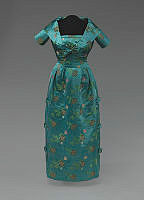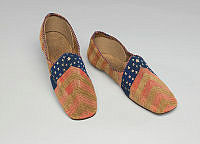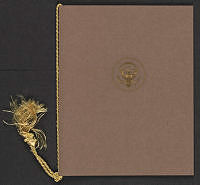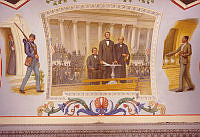Rubenstein Center Scholarship
Notable African Americans in the Early Nineteenth Century White House
While not as famous as the presidents they served, several African American slaves who lived inside the White House went on to gain recognition of their own. While many people can name all of the presidents of the United States, few people can tell you about the slaves several of those presidents kept while inside the White House. Many presidents, including George Washington, Thomas Jefferson, James Madison and James Monroe, were practicing slave owners, and starting with President Jefferson, kept slaves as their household staff in the Executive Mansion in Washington, D.C. Washington also used slaves as presidential staff but did so in Philadelphia and New York. Some of these slaves went on make history for themselves, and become famous in their own right after their time in the White House.
For example, there was Gracey Bradley, purchased by President Andrew Jackson during his time in the Executive Mansion but went on to become a master seamstress and one of the caretakers of the Hermitage, Jackson’s Tennessee home, after President Jackson’s death. William Lee, the faithful servant of Washington, rode with him throughout the Revolutionary War and became well known because of his proximity to George Washington.
Among the most well-known enslaved persons related to the White House are Paul Jennings and Elias Polk, who transcended their time in slavery to become known for other things before their deaths.

Paul Jennings
The Estate of Sylvia Jennings AlexanderWhile Paul Jennings was a slave of President James Madison, he is known more for his seminal work, “A Colored Man’s Reminiscences of James Madison” than for his time as a slave.
The book, published in 1865, is considered today the first White House memoir and a valuable tome on what life was like during those early days of the United States. For example, when President Madison brought him to the White House, “the east room was not finished, and Pennsylvania Avenue was not paved, but was always in an awful condition from either mud or dust. The city was a dreary place.”
And it is because of Jennings that we know another version of the story of how the famous Gilbert Stuart painting of George Washington was saved from invading British troops during the War of 1812. It is popularly known and believed that First Lady Dolley Madison personally saved the painting from the burning of the White House, but Jennings’ book complicates this story.
“She had no time for doing it. It would have required a ladder to get it down. All she carried off was the silver in her reticule, as the British were thought to be but a few squares off, and were expected every moment.” Jennings said in his book. Instead, the White House doorkeeper and gardener were the ones who physically saved the painting, he said. When two New Yorkers—Jacob Barker, a financier, and Robert G. L. De Peyster, a merchant—arrived at the White House to see if they might assist the first lady, they were given the Washington portrait and it was carried off in their carriage and placed in a Montgomery County farmer's barn for safekeeping.
The Madisons eventually sold Jennings, who ended
up in the possession of Daniel Webster, who eventually let Jennings
purchase his freedom, which led to Jennings’ book. After his time spent
as a slave, Paul Jennings established his own legacy for himself through
his memoir.
All she carried off was the silver in her reticule, as the British were thought to be but a few squares off, and were expected every moment.
The same could be said for Elias Polk, who became an active political speaker in the post-Civil War South. Purchased for President James Polk as a child, Elias Polk traveled to the District of Columbia with his master throughout his congressional career and again with him when President Polk lived in the White House.
Elias Polk felt an extreme attachment to the president, to the point when once offered a chance to escape, he refused. The Polks were riding aboard the steamboat China on their way to Washington in February 1845 when abolitionists boarded with the intention to free any slaves aboard. When Elias refused to leave the president-elect, the abolitionists were shocked and confused over Elias’s actions.
That loyalty continued after President Polk’s death, when Elias Polk entered politics in the South. He was never elected to office, but spoke around the country for the Democratic Party.
While the names of many former slaves are not common knowledge—or known at all—their stories and contributions to the historical record make them worth acknowledging today.
Works Cited
Romeo B. Garrett, The Presidents and the Negro (Peoria, Ill.: Association for the Study of Afro-American Life and History, 1982)
Jesse J. Holland, The Invisibles: The Untold Story of African American Slaves in the White House (Lyons Press, imprint of Rowman & Littlefield, 2016)
Paul Jennings, A Colored Man’s Reminiscences of James Madison (Brooklyn, N.Y.: G.C. Beadle, 1865)
















